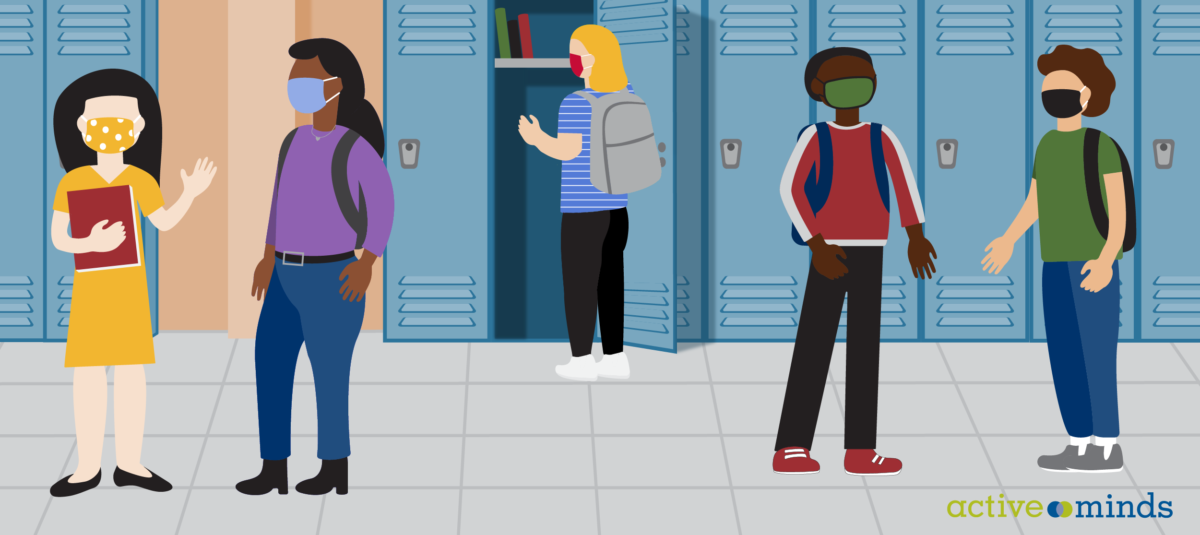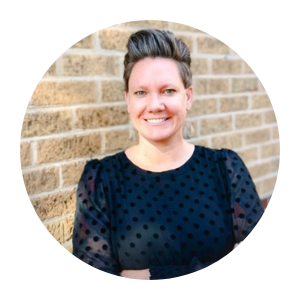Back to school season is here and it is feeling a little cloudy with a chance of _______. The word(s) that end that sentence seem to change daily. Depending on how COVID-19 continues to impact our communities, the messages we are hearing from schools about starting this academic year seem to be in flux.
While K-12 students, teachers, administrators, and parents and guardians are eager to start the school year in-person, it is important to recognize that the past eighteen months have included a roller coaster of emotions and experiences. This new academic year may bring some of the same, but we also have an opportunity to rethink how we navigate our daily lives in a school setting.
Many of our elementary, middle, and high schools have protocols in place to keep people safe and healthy this year, but what about helping to create an environment that proactively supports positive mental health? Active Minds recently launched our Life At Your Pace Hub with tips for navigating our new normal. This resource is designed to help ease the transition back into what many consider “normal” life, and it addresses topics like returning to the workplace and socializing in-person. However, the return feeling comfortable to in-person school will be a long one, so here are a few other ideas you can incorporate in your day to help the transition:
Personal Space
Everyone’s comfort level with being around people is going to be different. It is important to ask someone if they are comfortable saying hello with a hug, a handshake, an elbow bump, or a head nod. A simple “Are you okay with hugging?” when you see a schoolmate for the first time since last year will go a long way and will help make each of you feel comfortable being around others. For teachers who enjoy high fiving their students, it is just as important to understand your student’s level of comfort around these gestures and their comfort level in being in large groups in a classroom. Establish group norms that center on being respectful of where others are instead of just assuming that all students will be comfortable and successful working in close proximity to each other.
Checking In and Showing Up
One of the simplest things you can build into your day is checking in with people you interact with during your school day. These can be students you are in history class with, teachers you see in the staff lounge, or the bus driver who delivers you to school. We have become good at asking how people are doing, but what we need to be better at is actively listening to their answer and responding back accordingly. A quick conversation with genuine interest in how people are feeling could have a lasting impression on someone. Check out Active Minds’ Validate-Appreciate-Refer (VAR) tool for more tips to help you have everyday conversations with those around you.
Find Support
Many schools are funding additional mental health efforts this year. This can include hiring more school counselors, psychologists, or social workers to support student mental health and wellness. Schools may also be increasing in-school programs to talk about mental health or offer more resources for students to take advantage of. Find out what your school is doing this year to support mental health so that you know where to turn if you or your peers need help. If after exploring your school’s options you feel you need additional support, please visit our Referral Resources page to learn about resources offered in your community, as well as other options for getting help.
Creating Community
Is the conversation about mental health in your school one that includes all voices, especially student voices? Do you want to create a community where you can advocate for mental health and create awareness about mental health in your school? If your school has a health and wellness committee, are youth part of your committee? If not, invite students to sit at the table as you develop and execute your wellness goals for this academic year. Or, if you are a student who wants to create change, another engaging way for you to elevate the conversation about mental health is to start or join an Active Minds Chapter. Active Minds chapters are a peer-to-peer approach to promoting positive mental health, education, and encouragement to reach out for help.
Remember that whatever you are feeling about returning to school in-person is normal. The past year and a half has been full of constant changes, and it’s to be expected that you may be overwhelmed, excited, nervous, or even unsure of how you’re feeling. The best thing we can do during this time is support each other and respect each other’s needs; we will get through this together!




